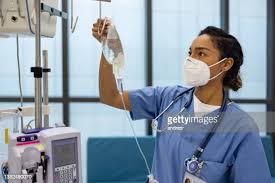Can LPNs Administer Botox and Fillers

Exploring the Role of Licensed Practical Nurses in Aesthetic Procedures
In the world of aesthetics, the demand for procedures like Botox and dermal fillers has been on the rise.
These minimally invasive treatments promise rejuvenation and a more youthful appearance. Amidst this surge in interest, a common question arises: Can Licensed Practical Nurses (LPNs) administer Botox and fillers?
Let’s delve into the intricacies of LPNs’ role in aesthetic procedures.
Understanding the LPN Role
Licensed Practical Nurses, or LPNs, are healthcare professionals with specialized training and education in nursing care. They work under the supervision of registered nurses and doctors, providing various healthcare services to patients. LPNs are known for their vital role in patient care, including administering medications, monitoring patients’ conditions, and assisting with medical procedures.
Can LPNs Administer Botox and Fillers?
When it comes to aesthetic procedures like Botox and dermal fillers, the regulations and scope of practice for LPNs vary depending on the state or jurisdiction. In some regions, LPNs are allowed to assist in these procedures, while in others, their involvement might be limited.
State Regulations
State regulations play a pivotal role in determining the extent to which LPNs can participate in aesthetic procedures.
Some states grant LPNs the authority to administer Botox and fillers under the direct supervision of a licensed physician or registered nurse.
This means that LPNs can perform these procedures, but only in the presence of a qualified medical professional.
Can LPN’s Administer Botox and Fillers?
Specific Training Requirements
- Courses and Certifications: LPNs may need to complete specialized courses in cosmetic procedures like Botox and fillers. These courses usually cover topics like anatomy, injection techniques, patient consultation, and possible side effects.
- Hands-on Training: In addition to classroom learning, hands-on training with experienced professionals is often required. This helps LPNs gain practical experience and learn proper techniques for administering the injections.
- Certification and Licensing: Obtaining certification in administering Botox and fillers may be a requirement in some regions. This certification shows that the LPN has successfully completed the necessary training and has demonstrated competence in the procedures.
Supervision by a Qualified Healthcare Provider
- Direct Supervision: In many areas, an LPN must perform these procedures under the direct supervision of a physician or another qualified healthcare provider. Direct supervision means that the supervisor is present on-site, overseeing the procedure and available for immediate consultation.
- Protocols and Guidelines: The supervising healthcare provider often sets protocols and guidelines that the LPN must follow. These guidelines ensure that the procedure is performed safely and in accordance with the best medical practices.
- Collaboration and Teamwork: Working closely with other healthcare providers, such as physicians, RNs, and pharmacists, is crucial. Collaborative practice ensures that the patient receives comprehensive care and that all healthcare providers are on the same page.
Related Articles
Are nurse practitioners considered doctors?
Care plan for Parkinson’s disease
What is an RNC in Nursing?
What Does “WHOL” Mean in Medicine?
Supervision and Training for LPN’s
Supervision and training are crucial factors in LPNs’ involvement in aesthetic procedures. In states where LPNs are permitted to participate, they must undergo specialized training in cosmetic treatments.
This training equips them with the necessary skills and knowledge to administer injections safely and effectively.
Additionally, LPNs must adhere to strict protocols and guidelines to ensure patient safety and optimal outcomes.
Benefits of LPNs’ Involvement
The inclusion of LPNs in administering Botox and fillers can offer several benefits to both healthcare facilities and patients.
LPNs are skilled in patient care, which translates into enhanced patient comfort and support during procedures. Moreover, their expertise in medication administration ensures accurate dosing and reduces the risk of adverse reactions.
Considerations and Concerns
While the involvement of LPNs in aesthetic procedures has its advantages, certain considerations and concerns should be addressed.
Patient safety remains a top priority, and proper training and supervision are essential to mitigate any risks. Additionally, clear communication among the medical team is vital to ensure seamless coordination and optimal patient outcomes.
Conclusion
In conclusion, the question whether LPNs can administer Botox and fillers is contingent on state regulations and specific training requirements.
LPNs, with their nursing expertise, can play a valuable role in providing aesthetic treatments while upholding patient safety.
However, their involvement must be within the legal framework and under appropriate supervision to ensure the best possible outcomes for patients seeking these procedures.
Reference
Phyllis Robinson MSN, RN is a Registered Nurse of 27 years. Phyllis is passionate about the prevention and healing of heart disease using traditional and alternative methods. She has experience in emergency room, telemetry, infusion, and critical care. Phyllis currently practices in an intensive care unit.






